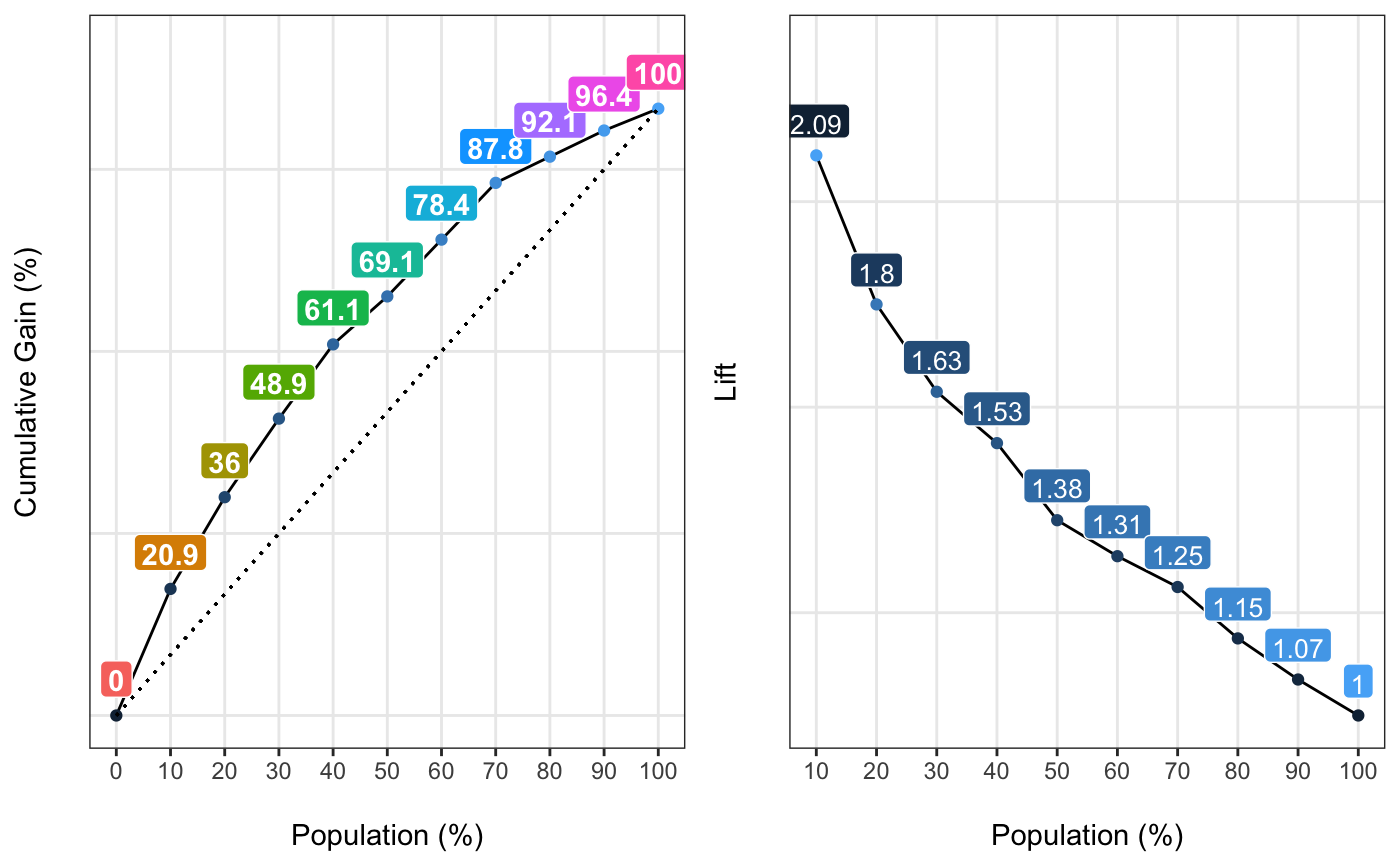Generates lift and cumulative gain performance table and plot
gain_lift.RdIt retrieves the cumulative positive rate -gain curve- and the lift chart & plot when score is divided in 5, 10 or 20 segments. Both metrics give a quality measure about how well the model predicts. Higher values at the beginning of the population implies a better model. More info at: https://livebook.datascienceheroes.com/model-performance.html#scoring_data
gain_lift(data, score, target, q_segments = 10)
Arguments
| data | input data source |
|---|---|
| score | the variable which contains the score number, or likelihood of being positive class |
| target | target binary variable indicating class label |
| q_segments | quantity of segments to split score variable, valid values: 5, 10 or 20 |
Value
lift/gain table, column: gain implies how much positive cases are catched if the cut point to define the positive class is set to the column "Score Point"
Examples
fit_glm=glm(has_heart_disease ~ age + oldpeak, data=heart_disease, family = binomial) heart_disease$score=predict(fit_glm, newdata=heart_disease, type='response') gain_lift(data=heart_disease, score='score', target='has_heart_disease')#> Population Gain Lift Score.Point #> 1 10 20.86 2.09 0.8185793 #> 2 20 35.97 1.80 0.6967124 #> 3 30 48.92 1.63 0.5657817 #> 4 40 61.15 1.53 0.4901940 #> 5 50 69.06 1.38 0.4033640 #> 6 60 78.42 1.31 0.3344170 #> 7 70 87.77 1.25 0.2939878 #> 8 80 92.09 1.15 0.2473671 #> 9 90 96.40 1.07 0.1980453 #> 10 100 100.00 1.00 0.1195511
